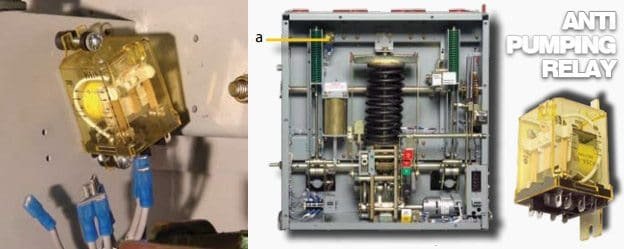A relay is a switching and sensing device that sends a signal to a circuit breaker, while a circuit breaker breaks the circuit contacts and is an isolating or disconnecting device. In power systems, switches allow system operators to connect or disconnect electrical circuits, and relays are electronically or electromagnetically operated switches, whereas circuit breakers are specifically designed to protect electrical circuits from damage, and are automatic and manual devices that utilize relays to detect faults or large current changes.
The relay permits a small amount of electrical current to control high current loads, allowing small current through the coil, resulting in a larger amount of current passing through the contacts to control electrical loads. Motor circuit breakers can replace overloads, offering the advantage of no need for fusing and opening when tripped.
Understanding Relay
Definition of relay: A relay is an electronically or electromagnetically operated switch that allows system operators to disconnect or connect electrical circuits. It is a switching and sensing device that operates on low power input voltage.
Function of a relay: The relay does not break the contact, but it only senses the error and sends the signal to the circuit breaker. It is also used to detect faults or large current changes in a circuit.
Components of a relay: Relays utilize components such as protective relays, instrument transformers, voltage transformers, fuses, surge protectors, and various types of relays such as solid-state relays, electromechanical relays, and more. The relay plays a crucial role in the protection system.
Understanding Circuit Breaker
Definition of circuit breaker: A circuit breaker is a safety device designed to protect electrical circuits from damage caused by overload or short circuit. Unlike a fuse, which must be replaced once it’s blown, a circuit breaker can be reset to resume normal operation after any faults are cleared.
Function of a circuit breaker: The main function of a circuit breaker is to interrupt the flow of current in an electrical circuit. It automatically detects and stops the flow of electricity when a fault is detected, preventing damage to the system or potential fire hazards.
Types of circuit breakers: There are several types of circuit breakers including thermal-magnetic, magnetic, and electronic circuit breakers. Each type has distinct characteristics and is used for specific applications to ensure the safety and protection of the electrical system.
Difference Between Relay And Circuit Breaker
Relays and circuit breakers are both critical components within electrical systems, but they serve different operational purposes. Relays primarily function as switching and sensing devices with low power input voltage requirements, while circuit breakers serve as automatic on-load isolating or disconnecting devices. Relays do not break the contact but merely sense errors and transmit signals to the circuit breaker to act accordingly. In contrast, circuit breakers actively break the circuit contacts to protect against electrical faults and damage. Notably, circuit breakers utilize relays to detect faults or large current changes, showcasing the interplay between these components in electrical systems.
The applications of relays and circuit breakers also differ significantly. Relays are commonly utilized in control circuits to manage the switching of smaller currents, while circuit breakers play a crucial role in the protection of electrical circuits from overloads and faults. Understanding the key distinctions in functionality between relays and circuit breakers is essential for efficient and safe electrical system design and operation.
FAQ’s
Can A Relay Be Used As A Circuit Breaker?
No, a relay cannot be used as a circuit breaker. The relay only senses errors and sends signals to the circuit breaker, which breaks the circuit contacts. Relays are for switching and sensing, while circuit breakers isolate or disconnect circuits.
What Is The Difference Between Circuit Breaker And Overload Relay?
The circuit breaker breaks circuit contacts, while the overload relay detects errors and sends signals. The relay is a switch and sensor, whereas the circuit breaker is a disconnecting device. Also, relays operate on low power input, while circuit breakers are automatic on-load devices.
Why Would You Use A Relay In A Circuit?
A relay is used in a circuit to control high current loads with a small current, allowing for safe operation. It acts as a switch, allowing a low-power input voltage to control a larger amount of current passing through the contacts to manage the electrical load.
Conclusion
The difference between a relay and a circuit breaker lies in their functions. While a relay acts as a switch and sensing device, a circuit breaker serves as an isolating or disconnecting device. Understanding the variances can aid in selecting the right component for specific electrical requirements.







